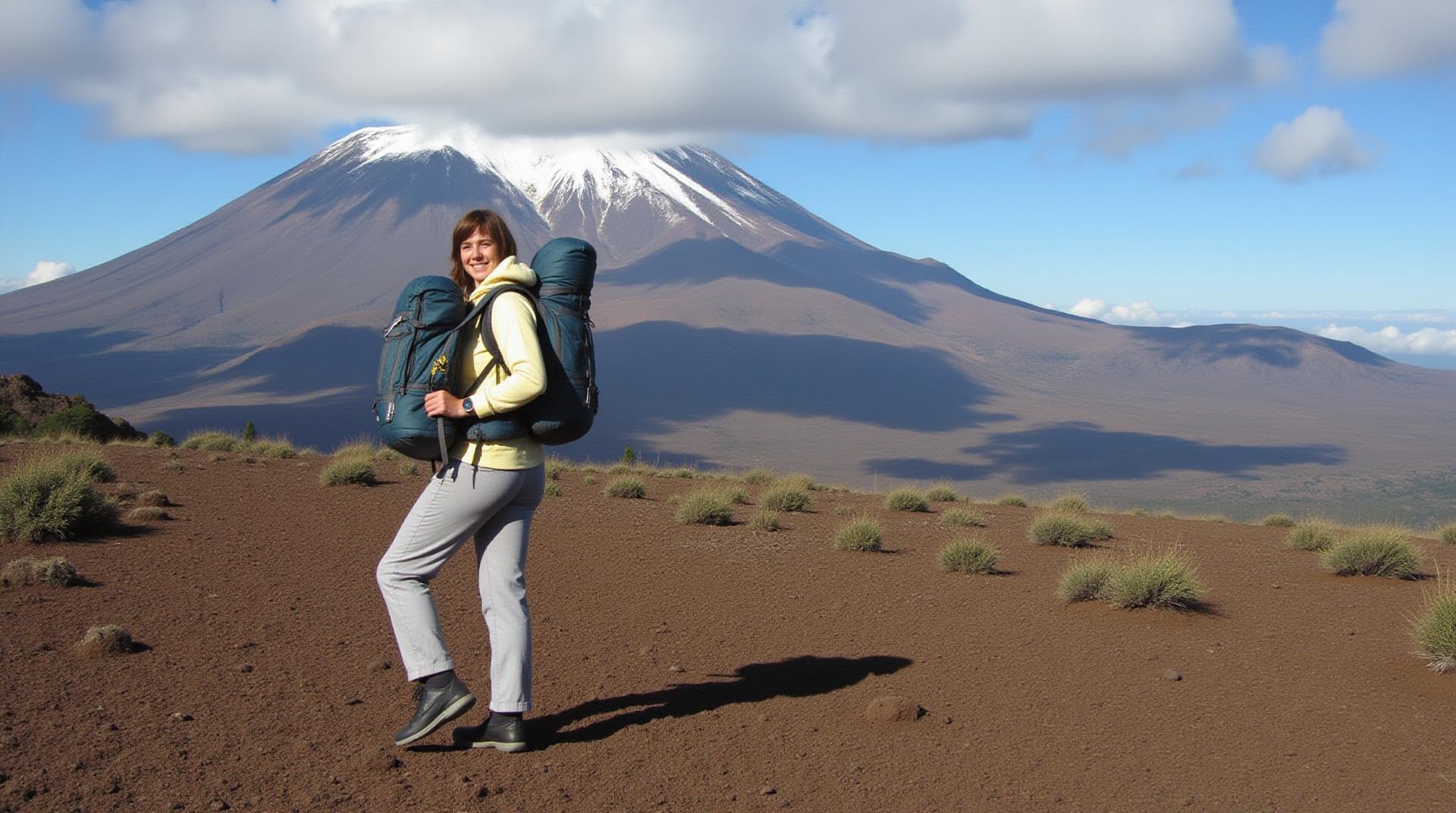Solo in Tanzania: Climbing Mount Kilimanjaro

Solo Adventures on Kili: Embarking on a Journey of a Lifetime in Tanzania
Exploring the majestic wilderness of Kilimanjaro, Tanzania, solo is more than just a climb; it’s a testament to human willpower and a celebration of nature’s grandeur.
A Breathtaking Horizon Awaits: Why Choose Solo Kilimanjaro?
Embarking on a solo journey to conquer Kilimanjaro offers an unparalleled experience. You’ll forge your own path, immerse yourself in the solitude and serenity of the African landscape, and navigate challenges on your terms.
Here are some advantages of solo climbing Kilimanjaro:
- Flexibility & Independence:
Schedule your climb according to your comfort, pace, and personal preferences - Connect with Nature: Immerse yourself in the wild beauty around you and build profound connection with the environment.
- Personal Growth: Push your limits, overcome fears, and cultivate resilience.
Essential Planning: Navigating the Journey to the Summit
Before setting foot on Kilimanjaro, careful planning is crucial.
- Book Your Climb: Choose a reputable trekking company, secured gear, accommodations. Research and compare various operators.
- Fitness Level: Assess your physical and mental fitness for the arduous climb. Consider joining a training program or hiking local routes before venturing to Kilimanjaro.
- Gear & Packing: Pack according to Kilimanjaro’s weather and terrain. Prioritize durability, comfort, and weather-appropriate attire.
Mastering Your Gear for Wilderness Delights
Invest in essential provisions for a successful climb. Key pieces of kit include:
| Essential Gear | Explanation |
|---|---|
| Lightweight Backpack | Durable and comfortable to carry your essentials |
| Sleeping Bag | Insulated to ensure comfortable sleep at night |
| Trekking Poles | Auxiliary support for stability while ascending and descending |
| Buff/Neck Gaiter | Versatile accessory for sun protection, wind, and moisture |
| First Aid Kit | Essential supplies for minor injuries and ailments |
Best Places To Visit in Tanzania Before your Climb
Extend your adventure and enhance your experience before your climb by immersing yourself in Tanzania’s diverse cultures and breath-taking landscapes:
- Arusha National Park: Home to wildlife including elephants, black rhinos, and Mount Meru – perfect for pre-climb acclimatization.
- Ngorongoro Crater: Experience the deep, diverse ecosystem of one of the world’s largest volcanic crater lakes.
- Serengeti National Park: Witness incredible wildlife gatherings, from the Great Migration to lion prides.
- Zanzibar: Experience the tropical paradise. Indulge in tranquility, beautiful beaches.
Enjoying the Journey: Tips For Active Solo Travellers
Solo adventurers face unique challenges. Embrace the opportunity for self-discovery and empower yourself for the climb:
- Mental Preparedness: Manage expectations, celebrate milestones, and embrace the ups and downs of the climb.
- Resourcefulness: Learn how to sustain yourselves on the trail using essential equipment and local knowledge.
- Continuous Learning: Embrace new experiences, immerse in local cultures, and listen carefully to their knowledge.
Resources to Inciting Your Scaling Adventures
Sample Itinerary – Solo Kilimanjaro Climb
This is a sample 8-day itinerary. Adjust as per your fitness and preferences
- Day 1: Arrive in Arusha, acclimatization walk
- Day 2: Embark on a guided trek to Shira Camp
- Day 3: More trekking to Lava Tower
- Day 4: Summit Day -BRD – Day 5-6: Take a break to follow up on trail walks.
- Day 7: Acclimatization Rest day. Optional guide services for summit training.
- Day 8: Depart from Kilimanjaro
- What is the best time of year to climb Kilimanjaro?
The best time to climb Kilimanjaro is during the dry season, from June to October and December to February. Avoid climbing during the rainy season (November to March), as this can lead to unpredictable weather and potential health risks.
- How long does the average solo climb take?
A solo climb can take anywhere from 6 to 8 days, depending on the route and individual pacing. However, it’s essential to factor in acclimatization time and personal preferences.
- Is it safe to climb Kilimanjaro solo?
While solo climbing is challenging and requires extra pre-planning, it can be a safe and rewarding experience. Choosing a reputable operator, obtaining the necessary permits, and wearing appropriate gear for solo expeditions help mitigate risks.
- What does solo climb Kilimanjaro mean?
Solo climb Kilimanjaro means climbing Kilimanjaro independently, without an organized group. It involves choosing your own pace, route, and services, giving you complete control over your adventure.
- How should I prepare for my solo climb?
Preparing is key for a successful solo climb. Consult with a medical professional for a personalized evaluation and pre-climb training to ensure you have the recommended fitness level and acclimatization strategies.
- What kind of equipment do I need?
Packing for a solo climb requires essential items like sturdy boots, warm layers, waterproof gear, headlamps, trekking poles, food & water bladders, and sleeping bags. Consider purchasing durable technical clothing for the mountain’s unique environment.
- Can I camp solo on the mountain?
While solo climbers are encouraged to consider camp etiquette and minimize impact while camping, solo Kilimanjaro expeditions typically involve camp setups by night and bed setting for rest.
- `) for each FAQ, making the information accessible and clear.
* Each FAQ is handled as a separate paragraph (character).
* The content can be expanded further by adding more detailed information and answers about each development.**Remember**: For real customer inquiries, consider adding extra questions and having a full-fledged FAQ website instead.
Let me know if you’d like to add more questions to this FAQ document, I can help!
Check similar topics:
“`html
FAQs – Solo Climb Kilimanjaro in Tanzania
“`
**Explanation:**
* The list uses an Ordered List (`
- `, `